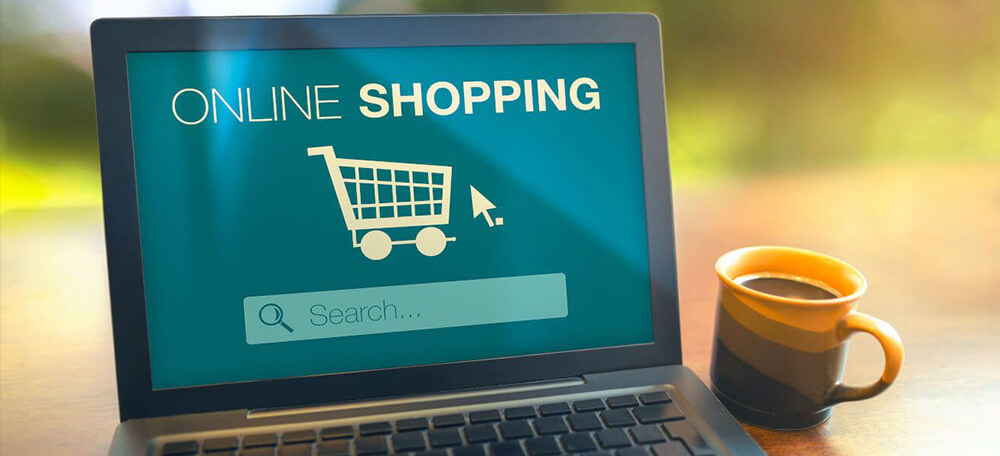Learn how to start an e-commerce business and sell products or services online by following these seven steps. Like starting any business, learning how to start an e-commerce business isn’t always easy — but building, launching, and maintaining websites that allow entrepreneurs, designers, and creators of all kinds to sell their products, is now easier than ever.
E-commerce businesses — businesses that transmit goods, services, and money over the Internet — vary in size and scope, from retail giants like Amazon to Etsy crafting sites. Online shopping is just one of the areas that have seen massive growth over the past five years. According to the U.S. Census Bureau report, in the third quarter of 2019 alone, U.S. e-commerce sales were about $154.5 billion, accounting for 11.2% of total U.S. retail sales.
Depending on your goals, starting an e-commerce business may make sense. After all, without the need for a brick-and-mortar store, e-commerce offers many entrepreneurs greater flexibility, affordability, and opportunity. What is the best way to start an online business? This guide can help you.
We’ll break down how to start an eCommerce business in 7 easy steps – so you have all the information you need to get your online business up and running in no time.

1. How to Start an E-commerce Business
While starting an e-commerce business is significantly different from starting a brick-and-mortar business, they also share many similarities. Several of the planning and legal steps you’ll have to take will follow the same process (more or less) as any other business. However, once it’s time to get up and running, you’ll see how different starting an e-commerce business can be.
Step 1: Research the field of e-commerce and find the one that suits you
Doing the necessary research is the first step in starting an e-commerce business. Just like you open a restaurant and research different locations, food options, and themes, you research the e-commerce area you’re interested in and make some decisions about your specific business.
For example, you need to think about what exactly your e-commerce business has to offer. Will you sell products or services? Do you sell physical or digital products? Where does your product come from? Along those lines, you also need to consider the type of business model you want to have – are you offering a single Product, packages, subscriptions, or something else?
Also, along the way, you need to think from a broader perspective: How will you deliver your product or service to your customers? What are your startup costs? Do you need to keep in mind your product or service? Law or other regulations?
These questions will be integral at the beginning of your business and will help you start creating and writing your business plan. This process will give you a better understanding of your specific goals and how you will achieve them. Especially in the eCommerce space, an important part of this step is finding your niche.
While the growth of the e-commerce industry is a huge benefit for those looking to learn how to start an e-commerce business, it also means more competition. You research your competitors and find a place where you think you can build your brand and be successful in selling your products and services.
Step 2: The second step is to choose your company’s name and legal structure
Once you’ve solidified your eCommerce business plan, the next step is to choose a name. Like any other business, you need to choose a unique name but also make it clear what your business is or does. You may want to consult your local governor’s website, as well as the U.S. Patent and Trademark Office, to make sure the business name you choose has not been filed by another company.
While you don’t want to invest too much time on your website, it’s still worth checking out to see if your potential business domain name is available. If your domain name is currently in use, you might consider a different business name or a different structure like “your business name.Co, instead of yourbusinessname.com.”
Next, choose the legal structure of your business. The type of business entity you choose will have important legal and financial implications for your e-commerce operations. Sole proprietorships, general partnerships, LLCs, and corporations are the most common business structures. Each entity type has advantages and disadvantages, so you can seek advice from an attorney or other legal professional about the best options for your business.
If you choose to open a sole proprietorship or general partnership, you don’t actually need to register in the state where you operate. Instead, your business will be legally associated under your personal name, which means that if you want to operate under the name you choose, you will need to submit a DBA or ‘operating as a business’ application to your local government.
Step 3: Apply for EIN
Next, you’ll need to apply for an EIN, or Employer Identification Number, for your e-commerce business. While not all business entity types require an EIN, this 9-digit number can help you differentiate between your personal and business finances. Alternatively, you can apply for an EIN for free with the IRS online, by mail, fax, or by phone. Now that you’re learning how to start an e-commerce business, you’ll most likely want to apply for this sales tax ID online, and once you do, you’ll receive your number immediately.

Step 4: Obtain Business Permit and License
After you have applied for an EIN, you will now need to obtain any business licenses or permits required to operate legally in your city and state. As we mentioned above, if you set up your e-commerce business as a sole proprietorship or general partnership, you don’t actually need to register your business with the state – unless you apply for a DBA to legally operate in a particular operation under the company name. However, for other types of business entities, you will need to register your business in your state and obtain a general license to operate. Depending on where your business is located, you may also need to obtain a local operating license.
Generally, since most e-commerce businesses operate from home, they do not require as many business licenses and permits as brick-and-mortar stores. However, you’ll need to determine what the specific requirements are in your area – you can usually find this information online through your state or local government’s website. For example, most places require home-based business owners to obtain a home occupancy permit in order to operate legally. This type of permit simply indicates that by operating your business from home, you are not adding traffic, noise, or problematic conditions to your location.
Other types of business licenses and permits you may need include:
- Professional and trade licenses in certain trades.
- Sales tax license.
- Health, Safety, and Environmental Permits.
- Sign permission.
- Building and building permits.
Step 5: Choose an eCommerce Platform and Create Your Website
At this point, you have completed the paperwork required to register and legally start an e-commerce business. In this way, most of the steps we are taking so far echo the entrepreneurial process of brick-and-mortar businesses. Now, however, instead of finding a location and getting ready to build your brick-and-mortar store, you’ll start creating your website and online store.
Like a brick-and-mortar storefront, this website will be the face of your business – it’s the first thing your customers see, and they’ll use it to browse and buy your products or services. With that in mind, creating your website will be one of the most important parts of starting your eCommerce business. When you develop your online storefront, you need to consider a few different points:
First, you have to consider your domain name, as we mentioned above. You’ll want your domain name (at least close) to match your business name. Along these lines, your most important decision may be choosing an eCommerce platform. Whether it’s an all-in-one software like Shopify or an open-source platform like Magento, your eCommerce platform will be the foundation you use to build and develop your online store.
Most eCommerce platforms not only allow you to create and launch your online store, but also customize your design, add your domain name (or buy one), manage inventory, take and send orders, receive payments, and more.
Although there are hundreds of such platforms on the market, you can consider any of the following popular solutions to start your eCommerce business:
1) Shopify
Shopify is probably the most well-known and popular e-commerce software, offering a user-friendly solution with all the features and various plugins. You can buy a Shopify subscription in one of four plans, starting with Shopify Starter at $5 per month (the plan doesn’t include a full online store).
2) WooCommerce
If you’ve already built a WordPress site, or are familiar with the platform, you can download WooCommerce to start selling on your WordPress site. This plugin is open source and free to download and includes various e-commerce features. However, compared to Shopify, WooCommerce is best for business owners with some technical knowledge to take advantage of its open-source nature.
3) Squarespace
Often considered a website builder, Squarespace also offers e-commerce features and is known for its modern templates. You can choose from two of Squarespace’s e-commerce plans — $26 a month for the basic plan and $40 a month for the premium plan.
As with Shopify, Squarespace is a user-friendly platform that can accommodate businesses of all sizes
and skill levels. However, as a website builder in the first place, Squarespace may not offer as many features, tools, or plugins as other alternatives.
4) Magento
Finally, if you want to customize every aspect of your online store, you can choose to use the open-source version of Magento. With this eCommerce platform, you can manipulate every element and customize your site—but you must also have the technical skills to do so (or pay for it).
While it’s safe to say that this platform is not for eCommerce beginners, if you have the necessary technical skills or the budget to work with developers, you’ll find that Magento offers probably the most open-source solutions on the market — — Plus, it’s free to download.
As you can see, there are many aspects to this step, and there are various important factors to consider when choosing the right platform for your eCommerce business. You need to consider cost, features, availability, and more – ultimately, as the backbone of your e-commerce business, you need a fully functional system that enables you to get up, and running, and manage your day-to-day operations.
Once you’ve decided which solution is right for you, the next thing you need to do is customize and launch your website. You need to think about how you want your online store to be organized, what you want the design to look like, what colors you want to use, etc. Depending on your platform and budget, you can create and publish your website yourself, or you can invest in the help of a professional designer or developer.

Step 6: Find or develop (and list) products
Choosing your eCommerce platform and creating your website is almost the end of the process. At this point, you need to actually find the source of the product you want to sell. When you do your research in the first step, you should have already thought about how to proceed with the process. You can make your own products, get them from resellers, or — if you sell your own services, such as a consultant, you might just have to describe and list those services on your business website.
If you’re selling products, as you can imagine, this step will be more complicated because you need to think about the inventory you want to start with, and what those start-up costs look like. You also want to make sure you take the time to list your inventory on your online store – thinking about customer experience, SEO, and the journey from when a customer buys a product to when they actually receive it.
Step 7: Market Your E-commerce Business
Now you know – you’ve learned how to start an e-commerce business. Now that you have your product or service ready to list on your online store, your website is up and running, you are ready to start serving customers. Of course, in order to do this, you need to market your eCommerce business properly.
You might decide to use a variety of marketing tactics – Google ads, social media ads, word of mouth, and more. At the most basic level, you’ll want to optimize your business website’s SEO and utilize any online marketing tool, including on your e-commerce platform.
As your eCommerce business is up and running and you start receiving orders, you’ll want to keep track of which marketing tactics are working and which aren’t — especially if you’re investing in them. Over time, you will be able to adjust and change your marketing strategy to find the one that works best for your business.
2. What is the cost of starting an e-commerce business?
So, now that we’ve gone through every step of how to start an eCommerce business, you may still be curious about one important factor: cost. As you can imagine, by starting an online business, you’ll save on all kinds of costs associated with brick-and-mortar stores—rent, property insurance, furniture, and more.
However, while it may be easier to fund e-commerce on a tight budget, there are still many different costs involved in starting e-commerce. As with any business, it can be difficult to determine exactly how much it will cost to start an e-commerce business. Your startup costs will largely depend on the type of e-commerce business you want to start, the software or platform you choose, how you source your products, and more.
With this in mind, you might think carefully about your budget at the beginning and keep track of all your expenses along the way. Specifically, you need to consider the following costs:
- Business Licenses and Permits: Depending on your entity type, location, and the products you sell, you may face a range of licensing and permit costs – some states charge lower fees ranging from $10 to $50, Other states may charge a few hundred dollars in registration fees.
- E-commerce software: While open-source platforms are free to download, such solutions incur other costs (developer fees, hosting, add-ons, etc.). On the other hand, for an all-encompassing platform, you can find some of the most basic options at lower prices (like the Square Online Store for $12 a month). A more advanced, broader solution will cost more, with Shopify advanced capped at $300 per month.
- Domain name and hosting: Some eCommerce solutions will include a domain name or hosting within the cost of the platform, and some will allow you to purchase a domain name through them. However, if you need to buy your own domain name and hosting, you can expect to pay $1 per year for a domain name, about $15 per year, and an average of $30 per month for hosting.
- Payment Processing: To accept online payments, you need to use payment processing software like Square or Stripe. Likewise, some eCommerce software solutions will include their own platform payment processing, while others will allow you to integrate with your preferred system. Generally speaking, you’ll pay around 2.9% plus $0.30 for every transaction you make at your store.
- Inventory and Shipping: Depending on what you sell, your inventory and shipping costs can vary widely. However, of all the costs we’ve discussed so far, your initial investment in inventory is probably the largest. You’ll want to buy inventory carefully, especially when you’re first starting out – you don’t want to spend too much money on products you can’t sell. Your shipping costs, of course, will depend on your sales, the shipping service you use, the size of the product you’re sending, and the shipping speed options you offer your customers.
- Marketing and Advertising: Generally speaking, it is safe to budget 6% or 7% of total revenue for marketing and advertising. This can be hard to estimate at first, so you’ll definitely want to take advantage of any free marketing and advertising options. Then, once you have a better idea of your eCommerce business, you can start exploring paid options for promoting your store.
You may also incur additional costs in equipment, business insurance, staff, consultants, etc.
Ultimately, as Roxanne King, owner of The Holistic Mama e-commerce site, told us, while it may be tempting to opt for cheaper options for e-commerce builders and other tools, some extra cost is out of the question Avoid, some are worth investing in. For example, Kim uses other apps on her Shopify store, such as the auto-fulfillment feature and pop-ups that cost an extra $50 a month, and she thinks the investments are worth it.

3. E-commerce Startup Tips
Just like starting any new business, starting an e-commerce business can be stressful at times. As part of the online selling community, you’ll be exposed to a wide variety of entrepreneurs and business owners who will likely be willing to offer their advice and best practices to help you get started. When we spoke with The Holistic Mama owner Roxanne King, she shared three tips for success:
1) Start simple
Already a prolific health-living blogger back in 2011, Kim started creating and refining her own natural skincare products at home, having been using commercial products with parabens for years since she became pregnant. It wasn’t until a few years later that she transitioned her homemade face wash from gift-giving to selling it at farmers’ markets and online — the beginning of her e-commerce career.
“I wouldn’t call it a marketplace at first. It’s a page on my blog, I named it ‘Shop,’ and I’ve only sold one product for a few months.” “There’s one that only allows people to use PayPal The pay button, which I got using PayPal’s website and then copy-pasted into my WordPress blog.”
While she credits her small start as part of her future success—she was able to improve her sales and shipping process before moving to large-scale sales—ultimately, she needed a more usable and secure platform—she now uses Shopify.
2) Share your business through multiple channels
Kim believes having a blog “by chance” two years before she opened her shop helped her business take off and advises others to do the same.
“When I launch a product for the first time, customers already trust me,” she said.
In this way, sharing your business or brand on social media channels like Facebook, Instagram, Twitter, and Snapchat is especially useful when you are just starting out with e-commerce operations. This type of early marketing is free and can be used to provide hints and get players excited about an upcoming product or product showcase.
3) Invest in multi-channel sales
King’s Holistic Mama’s products are now available at Whole Foods as well as on her expanded store website. She also sells some of her products as a third-party seller on Amazon. Small business owners who have their own websites but also sell on Amazon — often seen as competitors — just cover every corner of the market.
“Amazon is a tiny percentage of my sales, but it’s important to go there because some people only shop on Amazon,” Kim said.
Plus, selling through a big store like Amazon has other benefits, including being able to test if your products are as popular as you expect, lower shipping rates if you use Amazon’s Fulfillment by Amazon regularly, and a built-in trust factor, which often helps customers buy on Amazon Marketplace. Some consumers remain wary of online shopping, but trust sellers vetted by Amazon to fulfill their orders in a timely manner.
While maintaining your store and vision is critical to starting an e-commerce business, you shouldn’t rule out using a larger platform to help drive sales and brand awareness.
4. Bottom line
E-commerce has many advantages over brick-and-mortar stores – lower initial investment, you can start big or small, your online store can operate 24 hours a day, 7 days a week, nationally (or worldwide, if you wish) words) customers. It’s also easier and less expensive to expand if needed — all of which make starting an e-commerce business more valuable for aspiring entrepreneurs.
However, if you want your business to be an internet success story, you need to take important steps and invest. You should treat your eCommerce site like any other business – comply with tax laws, get necessary licenses, invest in customer retention and communication, and don’t forget to build a mobile-friendly platform
Finally, a final piece of advice for future e-commerce owners:
“With e-commerce, you really need to build trust because people won’t see you in person…so they may be suspicious. The bright side is that with blogging and social media, building that trust is more important than ever. Easy. Give them insight into your life and career, and they’ll be willing to support you.”






Leave A Comment